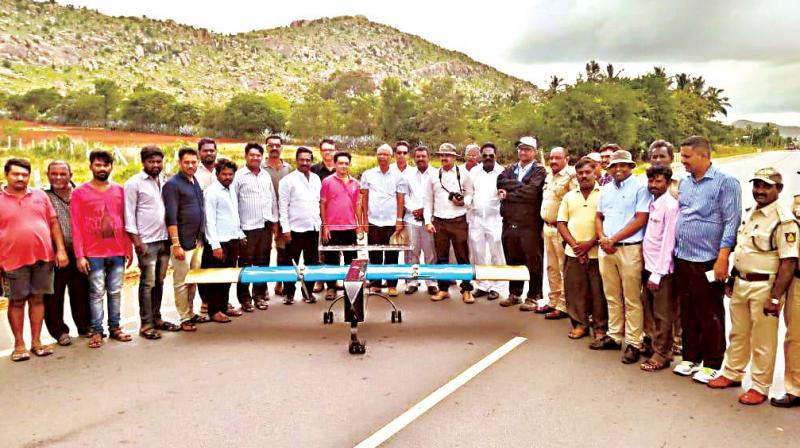Bengaluru: Gowribidanur bombed... it's seeds from the skies!

Bengaluru: Now that you have talking robots at some airports around the world, you may well ask what next? In Karnataka, it appears, drones are the new answer to afforestation and saving the state’s green cover.
The concept is getting a trial thanks to SayTrees, an NGO , which has been trying to revive plundered forests with the use of new technologies for a while. Coming up with the idea, it has now managed to disperse seeds using a drone in the Kallinayakanahalli hills of Gowribidanur with the help of the state forest department, Indian Institute of Science (IISc.), and the Dr HN Science Centre.
Professor Dr Omkar, head of thet UAV lab at the IISc., which developed the drone, explains that a dispensing machine was used to disperse the seeds from a height of 300 feet in the hilly terrain.
“We used five machines including a quadcopter. The seeds were soaked for 24 hours before being put into the dispensing machine. We loaded 5 kgs of seeds given to us by the forest department for dispensing,” the professor adds.
Co-founder of SayTrees, Kapil Sharma, believes drones can be used to afforest thousands of acres of forest land. “I want to create thousands of acres of forests as the existing forests have been cleared at an alarming rate. Seed bombing was the first thing that came to mind and I got in touch with Prof K P J Reddy of the IISc, who was heading the aerial seeding project in the Gowribinaur region and he introduced me to Dr Omkar, who was working on building a drone," he explains.
The NGO has now tied up with the scientist for a three-year research project that aims to afforest 3,000 acres in Gowribidanur. SayTrees will study the project for three years to assess the impact of aerial seeding and then take a call on replicating it in other parts of the country. The NGO will collaborate in funding the project for the next three years.
SayTrees has in the past used the Miyawaki method , a Japanese technique involving planting of numerous contrasting saplings close to each other, for afforestation. But Mr Sharma explains that although the results of the Miyawaki afforestation method were exceptional, it cannot be used for reforestation of thousands of acres.

